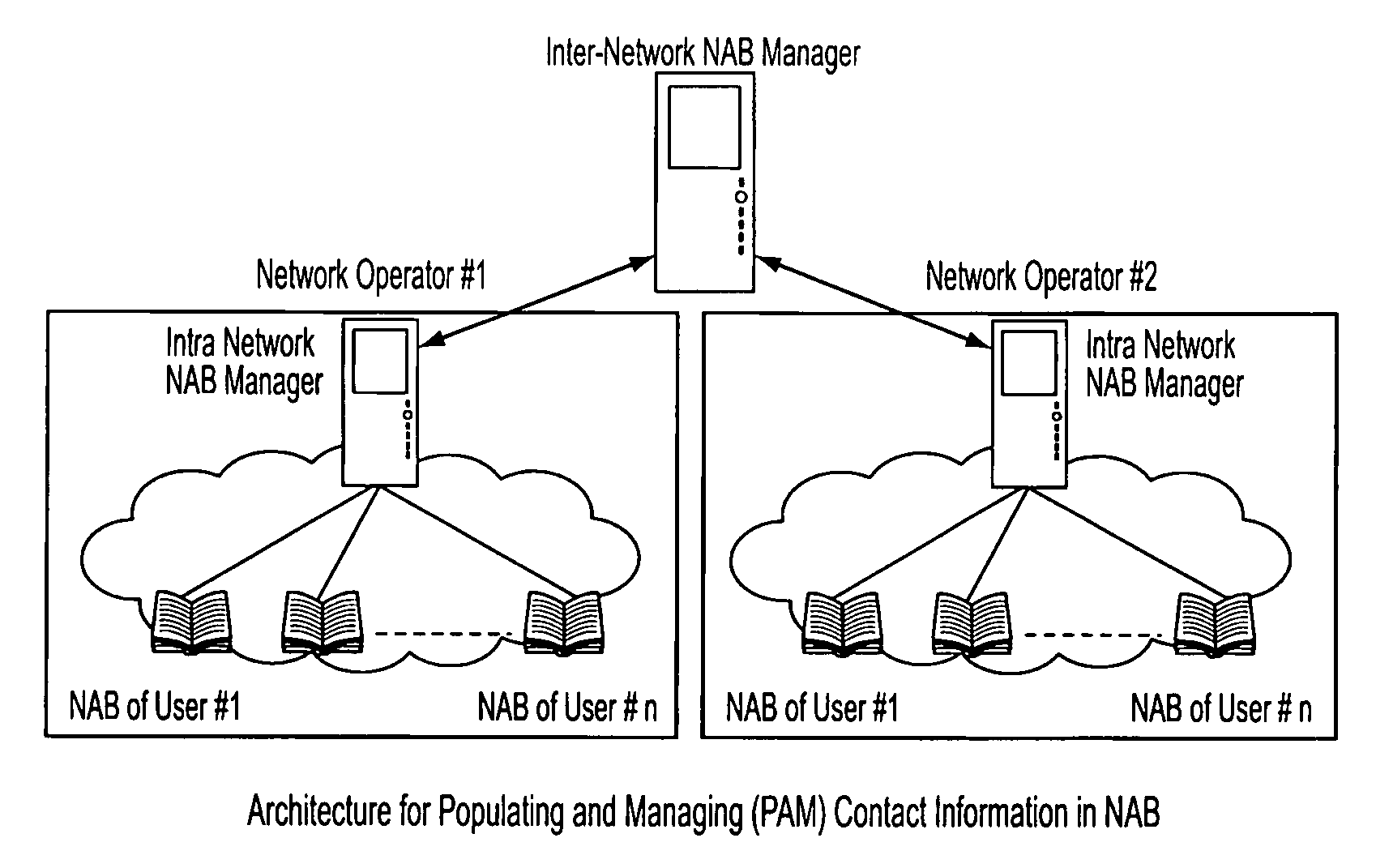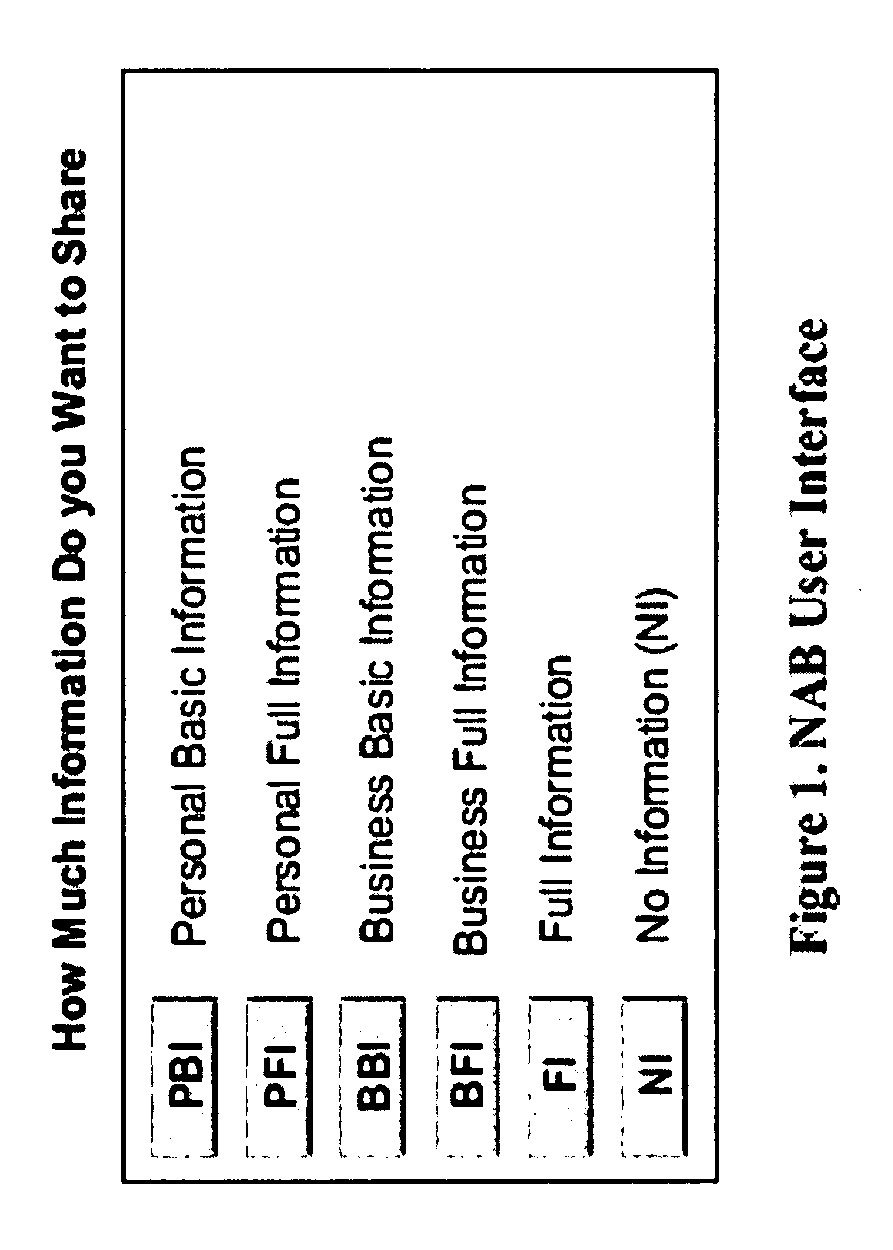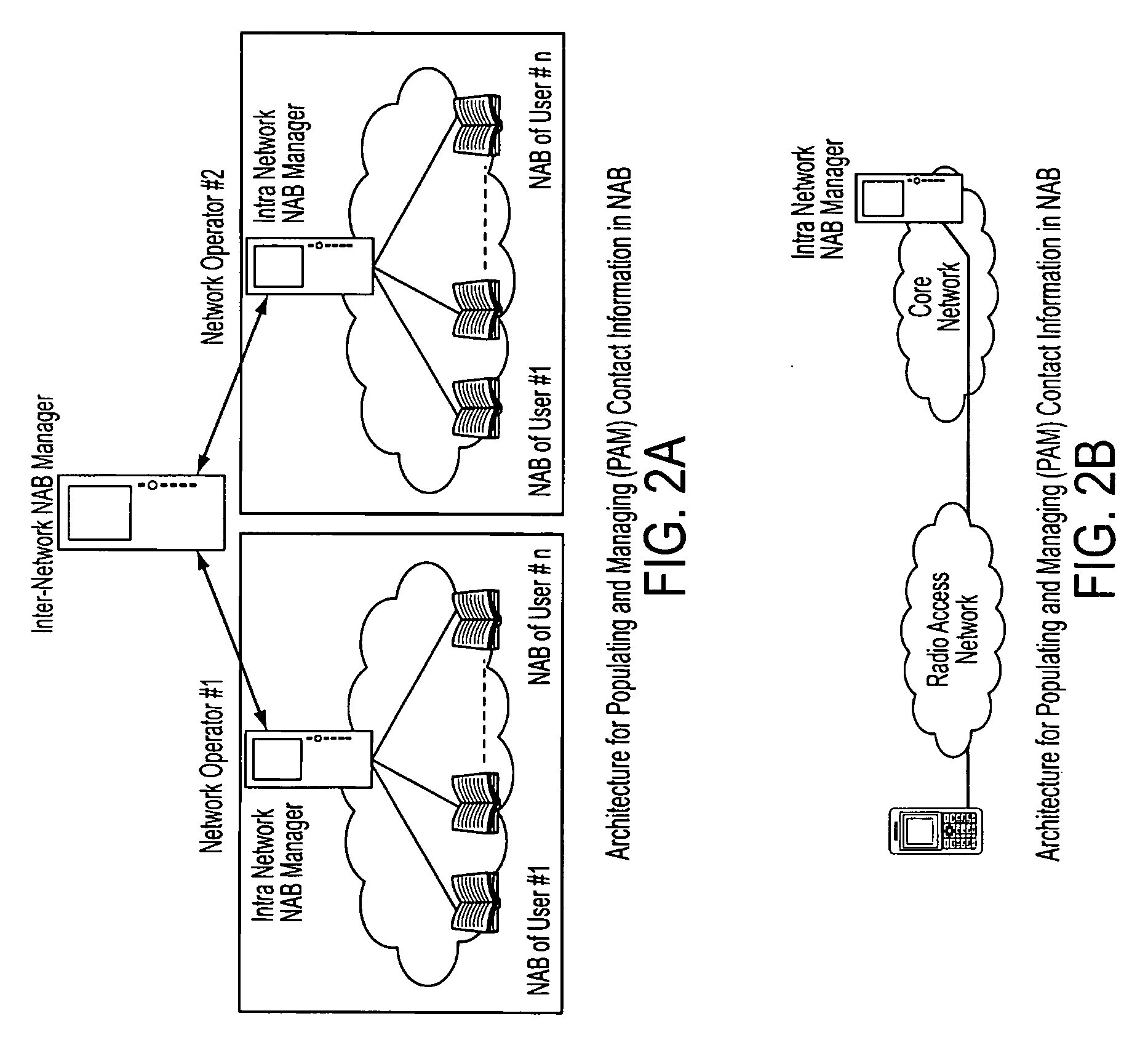Populating and Managing (PAM) Contact Information In The Network Address Book (NAB)
a network address book and contact information technology, applied in the field of network address book management, can solve the problems of limited memory capacity of sim, inconvenient movement of address books in device memory, etc., and achieve the effect of reducing or eliminating
- Summary
- Abstract
- Description
- Claims
- Application Information
AI Technical Summary
Benefits of technology
Problems solved by technology
Method used
Image
Examples
case 1
4.7 Use Case 1
[0121]This Use Case is described in reference to an illustrative example. Here, consider that Alice receives a call from Bob (i.e., who is a first-time caller). After the end of the call, Bob's device, as well as Alice's device present them with a respective “choice menu” if they want to save the contact information (e.g., of the new caller “Bob” and of the new callee “Alice”) in their CABs. They are also asked how much information (e.g. personal, business and / or other information items, etc.) they want to share in each other'CAB. Based on their choice of selection, the desired information is shared between the CABs.
[0122]In some embodiments, for an improved user experience, Alice and Bob can set their preferences to limit the frequency of such choice offerings. Thus, if the default policy is to save new callers' contact, the contact information can be saved automatically and transparently. Thus, in some embodiments, their devices can be set to automatically save all n...
case 2
4.8 Use Case 2
[0123]This Use Case is described in reference to another illustrative example. Consider that Alice is looking for Contact Information of her friend Bob. Preferably, her UE is capable of presenting her with a query menu. Alice fills in the maximum information she knows (e.g., First Name, Last Name, and City, etc.) and clicks “Get Contact Information.” This action sends a query to the network. The network searches Bob's contact information (in CABs) and after finding Bob's contact information either looks for or requests Bob's permission or his default policy stored in his CAB. Based on the result of such permission or policy, Alice receives either Bob's contact information or receives a message from the network that information delivery to Alice is denied.
case 3
4.9 Use Case 3
[0124]An advertiser and / or marketer “Charlie” wants to know individuals that are interested in X-BRAND cosmetics in a particular area. Charlie (who has subscribed for such service) sends a query to the network. Since Alice has specified in her extended CAB about X-BRAND of cosmetics (i.e., Alice either specifically identifies X-BRAND or X-BRAND falls within a type or category of advertised and / or marketer that Alice approves), her name is returned to Charlie. Alice may also create a portfolio or profile indicating, day and / or time she will accept to be called to receive information and / or advertisements about x-brand. In preferred embodiments, Alice can change her position in relation to an entity or category of entities at different times. For example, a week later, Alice could change her interest about X-BRAND of cosmetics, such that, at that time, Charlie would not receive her name and contact information.
4.10 The CAB Storage Capacity
[0125]This Use Case is described...
PUM
 Login to View More
Login to View More Abstract
Description
Claims
Application Information
 Login to View More
Login to View More - R&D
- Intellectual Property
- Life Sciences
- Materials
- Tech Scout
- Unparalleled Data Quality
- Higher Quality Content
- 60% Fewer Hallucinations
Browse by: Latest US Patents, China's latest patents, Technical Efficacy Thesaurus, Application Domain, Technology Topic, Popular Technical Reports.
© 2025 PatSnap. All rights reserved.Legal|Privacy policy|Modern Slavery Act Transparency Statement|Sitemap|About US| Contact US: help@patsnap.com



